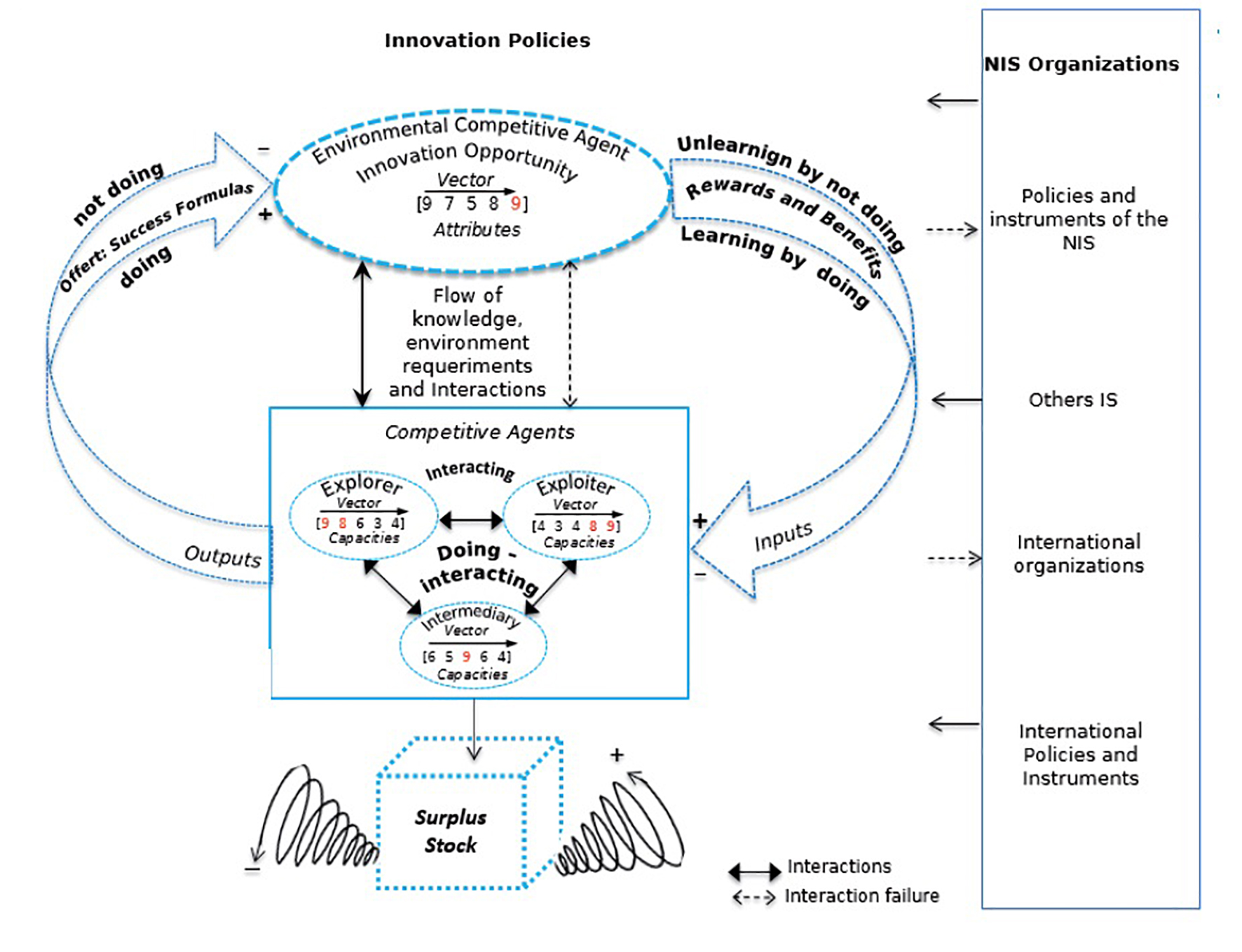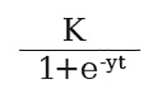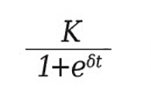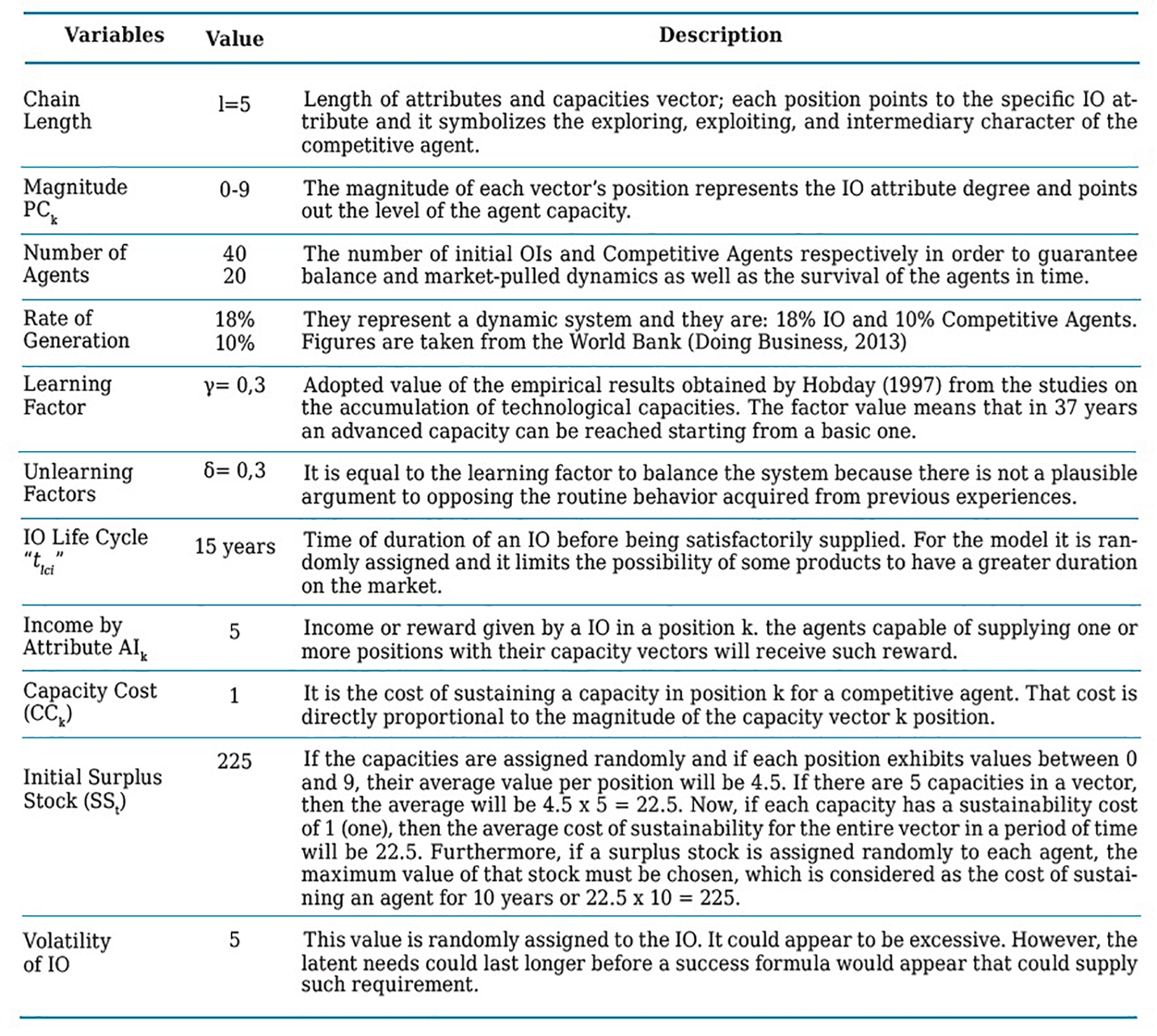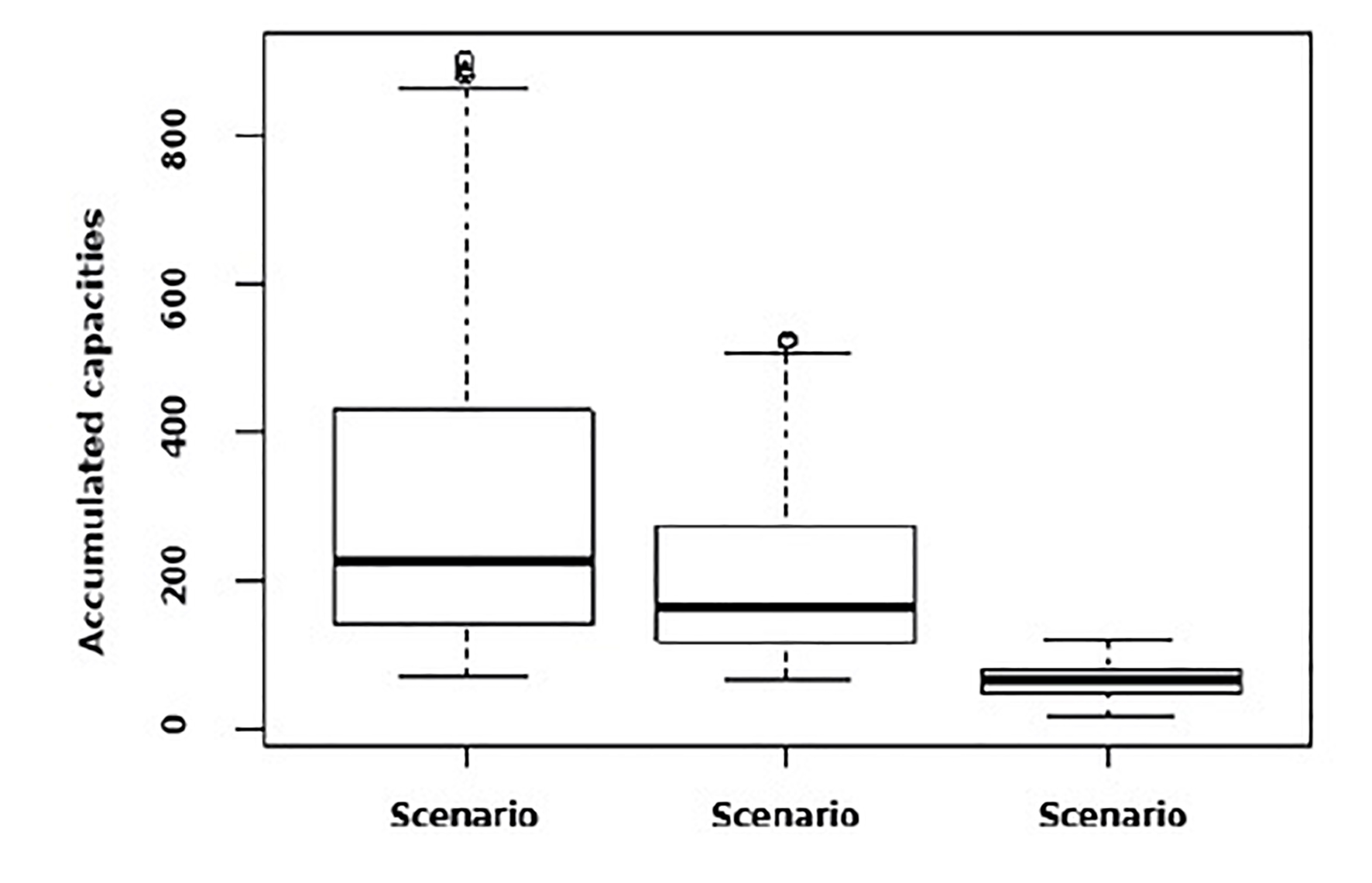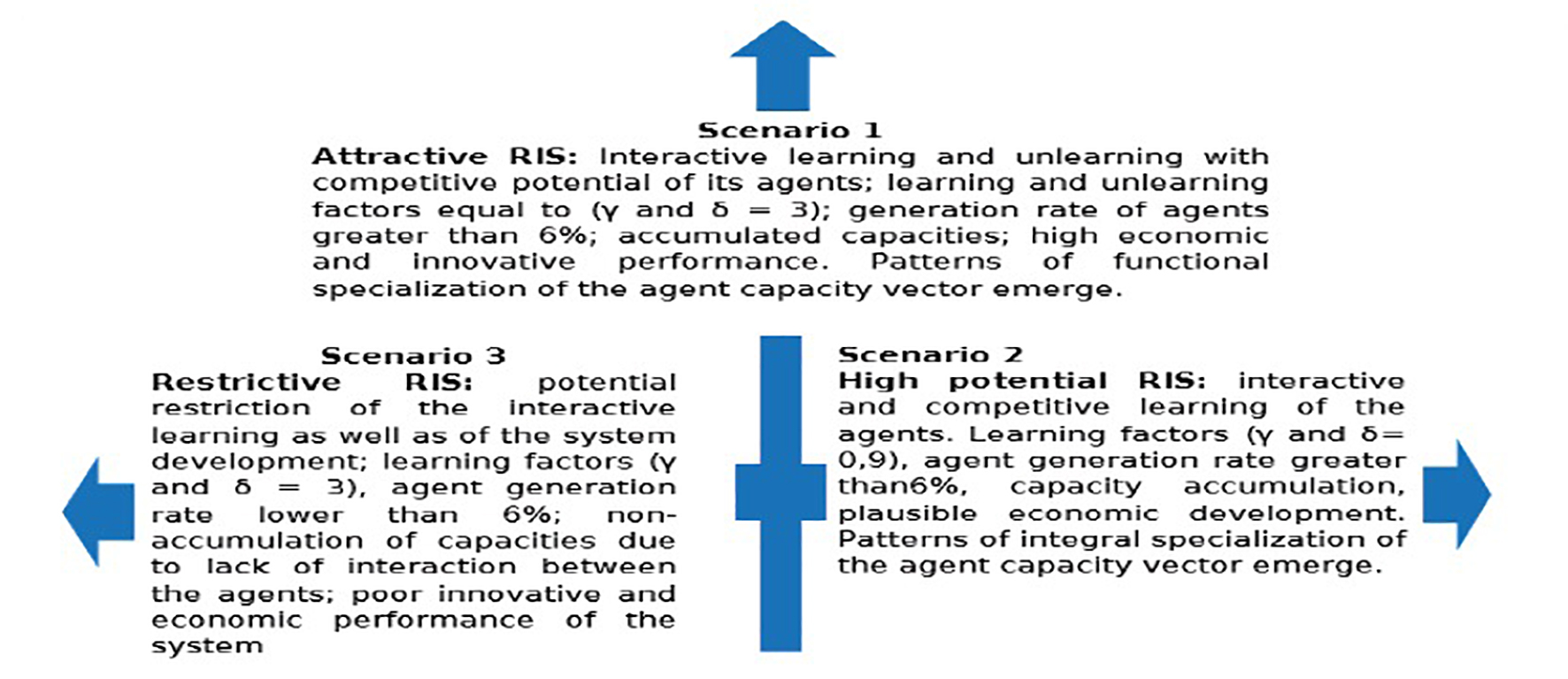1. Introduction
Knowledge, learning, and innovation are the most important factors for global competitiveness in a knowledge based economy (Lundvall, 1992; Edquist, Lorenzen & Vincent-Lancrin, 2001) . Different modeling perspectives of Regional Innovation Systems (RIS) are more concerned about revealing the region’s productive and institutional structure and the interactions and inter-relations its their different agents (Moulaert and Mehmood, 2010). However, they have taken a top-down approach which is more adequate for national systems, leaving aside the research from bottom-up perspectives that contemplate, among other phenomena, patterns of local learning (Howells, 1999; Iammarino, 2005). At present, conventional analysis methods of the RIS display difficulties in describing complex dynamics such as the interactive learning processes (Quintero and Robledo, 2013) and, therefore, it is necessary to use alternative analysis mechanisms such as modeling and simulation in order to research those learning patterns that allow to differentiate adequate strategies and policies as well as to acquire better knowledge about the performance of these systems.
The current innovation models in recent literature represent the processes’ dynamics. that intervene in innovation and highlight the importance of learning (Triulzi, Scholz, and Pyka, 2014; Ponsiglione, Quinto, and Zollo, 2014). However, understanding what are the mechanisms responsible for shaping these systems and, particularly, learning is not easy; mainly due to the heterogeneity of the agents that intervene and the complexity of their dynamic processes (Gilbeert, Pyka, and Ahrweiler, 2001). The aforementioned has led to considering RIS as Complex Adaptative Systems (CAS) conceived as an agreement among agents that interact through rules that change as the agents accumulate experience (Holland, 2004). Among the most useful simulation techniques to address the CAS are the Agent Based Models (ABM). This approach studies the emergence of behavioral patterns in a system at a macro level, starting from the interactions of semi-intelligent agents at a micro level.
This work introduces an Agent Based Model. Its Competitive Surroundings represent the Innovation Opportunities (IO) as demands generated in the system. Furthermore, it introduces a great amount of competing agents who satisfy the demand through their Success Formulas (emphasis made). The interaction among agents is described through rules of decision making; hence allowing to observe patterns of specialization of the agents’ abilities brought on by practice and their accumulation.
To such end this work is structured as follows: Initially, in the second section, a description of the ABM approach is made. After that, the theoretical framework is introduced describing the theories and concepts that support the model. The third section describes the methodology used for the model proposal and building. The fourth section exposes the results and analysis from the proposed assumptions and the model’s logic, enabling a better comprehension of learning in the RIS. Likewise, the parametrization verification, and validation of the model are exposed, ending the section with an analysis of the behavior through scenarios. Finally, the conclusions are exposed as well as the future work seeking to replicate the model and its further research.
2.Theoretical Framework
2.1. Agent Based Simulation and Modeling Approach
An increasing interest on simulation approaches as methodological approximations for the theoretical development on topics related to strategy and organizations is currently present in the literature because simulations reveal the results of the interaction between multiple organizational and strategic processes developed through time (Davis, Eisenhardt, and Bingham, 2007). The ABM approach is being presently applied as a study methodology in many areas related to the organizational context (Lättilä, Hiletofth, and Lin, 2010) thus permitting to study the emergence of behavioral patterns in a system at a macro level from the interactions between the semi-intelligent agents at a micro level (Table 1).
2.2. Resources and capabilities as Key Elements in Interactive Learning in the RIS
The research work done by Lall, 1992 permits to reconstruct the evolution and to distinguish the perspectives of the capability concept. The model proposed and described further ahead in this research work is built from the perspective of resources and skills; the latter being described as “the ability to use resources in order to perform a task or activity” ((Hafeez, Zhang and Malak, 2002, p. 40). Core skills are another important element that influences interactive learning. Hafeez et al., 2002 define them as “those skills that allow the company to display its resources in such a way as to generate competitive advantages” Hafeez et al. (2002). Finally, the skills that an innovation system requires to perform its functions of generation, promotion, and use of knowledge (Carlson, Jacobson, Holmen, and Kickne, 2002) can be classified as skills for research, development, intermediation, production, and marketing (Wang, Lu, and Chen, 2009).
2.3. Interactive Learning Processes and their Relation with the Concept of Innovation
The determining aspects in the process of innovation vary in the literature in relation to the concept one may have of innovation. The strict concept proposed by Nelson and Rosemberg (1993) uses the perspective of learning from searching and exploration. On the other hand, the wider concept developed by Freeman (1987) and Lundvall (1992) has not only considered technological innovations, taking into account the non-technological ones as well. Lundvall has preferred to define innovation not only as a process that includes the introduction of innovation for the first time in the market, but also its promotion and use, and thus emerging the perspective of learning by practice which includes learning by doing (Arrow, 1962); learning by using (Rosemberg, 1982), and learning by interacting (Lundvall, 1992). According to Lund (2004) there are situations of interactive learning that can be promoted by different factors that help and provide better learning in an innovation system. Such factors are related to the promotion or restriction of new product development and their economic performance in the market.
3. Methodology
In order to analyze the learning processes in the RIS through the ABM approach, it must be understood that any innovation system emerges from the interaction between heterogeneous agents (Edquist, 1997). A model should enable the performance of experiments that make it possible to identify and know the set of patterns that emerge from learning (Howells, 1999) in order to differentiate policies and adequate strategies for a better understanding of the RIS performance. The methodology for the construction and simulation of the model sought the simplified proposal of Sargent (2013) for the construction, verification, and validation of an ABM (Figure 1).
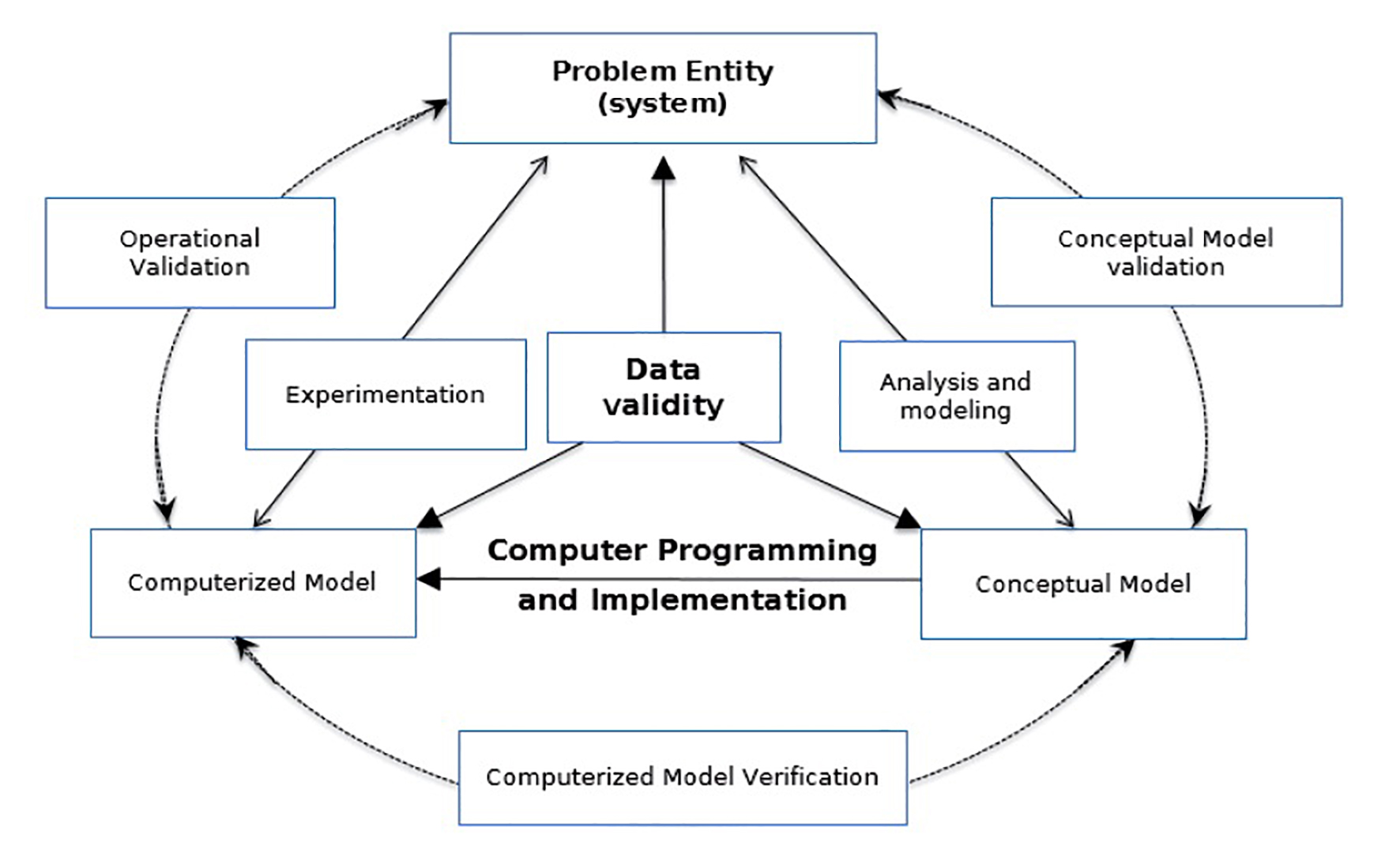
Figure 1 Methodology for the elaboration of a ABM. Source: Elaborated by the authors from Sargent 2013
From this perspective, our problem entity is a RIS that learns through the interaction between heterogeneous agents affected by competitive surroundings and factors that favor or not the leaning system. The conceptual model was designed and built following the Wilensky (1999) proposal, responding to the initial questions and clarifying how the model would help to comprehend the phenomena. Such questions are: What is the problem to be researched? What are the most important assumptions for the creation of the model? What is the logic for the creation of the model? Wilensky proposes that the ideas or answers obtained be contrasted with the theory seeking for the model to reflect in an adequate manner the concepts that support it theoretically. Finally, the computational creation of the model and its potential application was made.
4. Results and Discussion
4.1. Problem Entity
Adopting and RIS perspective from a national regional approximation, seeks to analyze the common characteristics of these systems. To that end, we draw from the definition offered by Asheim and Gertler: “The institutional infrastructure that supports innovation is the productive structure of a region” (Asheim and Gertler, 2005, p. 299). The RIS is integrated by actors (explorers, exploiters, and intermediaries or catalyzers) who interact among themselves, and whose relational proximity is key the moment it gets involved in interactive learning (Lundvall, 1992). Learning may not be easy because it is characterized by displaying attachment to a region and for being part of or rooted locally generating localized capabilities that are distributed unequally throughout the system.
The use and putting in practice of that capability brings about learning dynamics locally to the system. That is how that capacity makes it possible for people to integrate, build, and reconstruct internal and external abilities to confront rapidly changing environments (Teece, Pisano, and Shuen, 1997). The RIS are CAS which are composed by individual elements, by rules that mandate their behavior, and by an environment with which they interact. As those interactions take place, the individuals learn to anticipate future consequences, hence modifying the way they make decisions as a result of the learning emerging from the system and making it possible to observe behavioral patterns such as self-organization, adaptation, and specialization of the agents.
4.2. Conceptual Model
The objective of the conceptual model is to clarify how it will help to comprehend the phenomena the phenomena. To this end, the following questions are formulated: How is learning represented in a RIS from an evolutionary framework of the agent’s interaction? What learning patterns emerge in the system and what incidence do they have in the system’s performance? Indeed, it is desired to model learning in a RIS that emerges from the interaction between heterogeneous agents, affected by a competitive environment as well as by factors influencing the system’s performance that may favor it or not. The model’s assumptions include two different types of agents: The first one is the Competitive Environment and the second, the Competitive Agents who explore, divulge, and exploit the region’s capabilities. There are five proceedings: 1) the generation of the IO, understood to be the demands generated by the Competitive Environment; 2) the construction of the Success Formula, conceived to be the offer generated by the agents; 3) the rules regulating decision making that define the behavior of the agents; 4) the compensation or cost-benefit function; and finally 5) the learning by doing and interacting.
In order to understand the logic of the proposed model, the conceptual model resulting from the proposed assumptions is schemed (Figure 2). Such scheme represents the Competitive Environment that demands the IO with its own attributes in a time period t. the demand is represented through messages and defined by a vector of attributes of length l=5, volatility v and an innovation life cycle time tlci that corresponds to the time period when the Competitive Agents who are capable of satisfying the demand will receive the benefits.
The IO are generated at random and geographically localized. Therefore, the probability of an agent visualizing them will depend on its relational proximity from the place where it was generated and on the market’s capacity. The Success Formulas are built through integration between Competitive Agents and the environment. A Competitive Agent can create by itself or through the interaction one or many Success Formulas through its vector of capacity of length l=5. In order to simulate a dynamic system, the model represents the emergence of new agents establishing different rates of generation located at random and provided with a capacity vector with its respective positions and magnitudes. Each position points to a specific attribute that demands the IO and symbolizes in the Competitive Agent, the exploring and exploitation character of its capacities. Each capacity is defined according to its position as follows: exploitation capacities (marketing and production) are represented to the right of the vector; the exploration capacities (capacities of R&D), to the left of the vector; and the central position representws capabilities of intermediation. The magnitude of both vectors represents the initial random values between 0 and 9 that represent the degree of the attribute required by the IOs and the level of the competitive agent’s capacity. Hence, the IO are defined as the l attributes of innovation that seek to be satisfied satisfied by the l capacities of the Competitive Agents through the construction of success formulas individually or through the interaction with other agents.
The interactions occur through two mechanisms or rules of decision making. The first one is called localization distance between agents. It is defined as the shorter distance of R radius between two agents. The second is called the complementary distance of the capacities defined as the shorter distance between the magnitudes of the vector’s position from the agents. Based on these two rules, the Success Formula creation is initiated. So, once a Competitor Agent interacts with an IO by localization distance, then the second interaction mechanism that compares the two magnitudes is initiated. If the capacity vector is greater or equal in its last position to the IO attribute vector, then the message will be visible for the agent and the comparative process between the right and left positions will be repeated. If a Competitor Agent presents equal or superior magnitudes in all the positions with respect to the vector of IO, then they will be capable of creating a Success Formula by themselves.
In fact, if the magnitude in the extreme right position from the capacities vector is less than the corresponding magnitude of the attributes vector, then the agent will not identify the IO no matter how minimal its localization distance is or its behavior observed in the innovation dynamics pulled by the market. It is possible that not even one agent has all the necessary capacities to take advantage of an IO after identifying it. Therefore, the agent will initiate the exploration and search for other agents using the same rules of decision making described above in order to respond to the demand. Cohen and Levinthal, 1990 point out that through its market capacity a company is capable of recognizing and utilizing new information relevant to a particular market product (Rosemberg, 1982). Finally, the localization and complementarity distance represent mechanisms of comparison from the most exploitative positions towards the most exploring positions due to the short term characteristics it has; the exploitation for the survival of the agents as Gilsing and Nooteboom (2006) point out.
The Competitive Agents are generated with a randomly assigned surplus stock. The magnitudes of the attributes vector determines the maximum benefit the agents could obtain. Such benefits have as assumption a Gaussian behavior for the model and represent the compensation procedure, and the cost-benefit function. The agents that would identify and assume as theirs an IO through a Success Formula will obtain the calculated benefits through equation 1.
Where B kt is the benefit per attribute in a period, t is the period when the tlci is found, k is the vector position, Alk is the introduction of the attributes vector in position k, PAk is the magnitude of the attributes vector in position k, μ is the media of the Gaussian function (μ = t lci /2) and σ is the random variable (σ = t lci /6). During each period the agents will pay a cost to sustain the capacities and it is calculated through equation 2.
Where CCV is the total cost of the capacities vector, k represents the position in the vector, m is the quantity of positions in the vector, CCk is the cost of a capacity in its position k, PCk is the magnitude of the capacities vector in position k. If the difference between the benefits and the costs is equal zero, the agent would have consumed all its surplus stock and will die. If it is positive, the surplus stock will be accumulated during that same period and it will be calculated through equation 3.
The model “operationalizes” the learning dynamics making possible the competition between agents based on their distinguishable capacities or core skills. Taking into account that learning is manifested in the proximity of the companies’ previous activities (Teece, 1988), the model considers that those agents that use their capacities will strengthen them thanks to the experience and to the award or compensation given by the environment, making evident the Learning by doing; otherwise, they will be weakened until the agent loses them or dies. Hence, the Success Formulas are the product of Learning by doing and interacting. Such procedure increases the used capacities as well as the experience of the agents that interact. This behavior corresponds to a dynamic of learning or un-learning, whose trajectories are sigmoidal functions or S curves calculated through equations 4 and 5.
Where k is the maximum magnitude that a capacity can take, γ and δ are the learning and un-learning factors and t is the time in which a capacity is used. The more a capacity is used, its accumulation resulting from learning by doing will present a trajectory that will depend on the γ factor. For example: basic and advanced capacities (high and low magnitudes) as they are used will present slower and lengthier learning dynamics than those intermediate capacities that present faster learning dynamics. The model emphasizes the accumulation of innovation capacities through the interaction between the agents for the generation of the system’s abilities particularly in the interactive learning dynamics (Lundvall, 1992).
4.3. Computerized Model
In order to create the computerized model, the previous steps were translated to a source code in the Netlogo platform version 5.1.0. After that, a computerized verification and the validation of the model were made from the parameters presented in Table 2.
In order to obtain valid and objective conclusions from the simulation process, a design of experiments was carried out whose response variable corresponds to the accumulated capacity of the different positions of the Competitive Agents that create Success Formulas. The co-variables or fixed effects called factors correspond to: the surplus stock, proposed scenarios, and lastly to the item or factor called capacity (Table 3).
The simulations point out that the response variable to the accumulated capacities during the three scenarios present significant differences after applying confidence intervals of the Tukey type. Which led us to think that in spite of not having included other variables, the model is 99% reliable for the exit variable being studied (Figure 3).
According to Sargent (2013) a simple perspective “illustrates more clearly the verification and validation of a model. The verification’s objective is to prove that a model presents a satisfactory range of precision within its application dominium”. (Sargent, 2013; p. 12) The computational model was validated through the traces technique suggested by Sargent (2013). A follow-up to the entities behavior was made through each sub-model of the general model with the purpose of determining that the defined assumptions and rules were adequate for the expected theoretical behavior. The validation of the conceptual model used the “rationalism historic method” technic suggested by Sargent (2013), consisting in proving that the model’s underlying assumptions (proximity, complexity, interactive learning, accumulated capacities, among others) were congruent with the premises that are derived from the theory’s logical deductions. Finally, the operational validation used the technique of “amicable historic approximation” drawing from specific historical case studies and from learning dynamics analysis through the interaction and accumulation of capacities in East Asian electronics industry (Hobday, 1997). Such approach allows the generation of multiple sophisticated acts observed in an industry and is oriented specifically to the behavior, decision requirements, and to the interaction of the agents with the environment.
4.4. Model analysis Scenarios
The scenarios are coherent, plausible stories about the future and are very useful if they try to address issues that policy makers may have. In Figure 4 there are presented different scenarios proposed for the model.
The first scenario represents a RIS with a competitive potential where the system’s agents are benefited from interactive learning (Rosemberg, 1982); that is, the historic tendencies are kept for each of the selected parameters of the calibrated model. The second scenario represents a RIS of high learning potential. That is, interactive learning and the speed at which capacities are accumulated through a learning factor are favored. Moreover, these two scenarios represent a potential framework for the development of a RIS as suggested by Lundvall and Vinding (2004) with a high innovative performance from variables such as density as proposed by Frisch and Slavtchev (2011), which could be observed through the indicator of the number of agents that survive the system. Finally, the third scenario represents a restricted RIS as a problem scenario. The parameters that do not favor interactive learning and hence the non-accumulation of the system’s agents’ capacities are evaluated in this scenario. The simulation time was considered from the studies of the so called late comer firms from the Eastern Asian region. Such studies point out technological learning dynamics through the construction and accumulation of technological capacities (Hobday, 1997).
In order to identify tendencies in the behavior of each one of these scenarios, a 50 year period for the three of them was considered. However, the RIS is a restricted scenario and it only needed a 30 year period. The comprehension of the learning and unlearning dynamics of the different competitive agents emerges through interaction and is accumulated from the agents capacities, starting from the requirements of certain specific attributes taken from the Competitive Environment, thus facilitating a better comprehension of the innovative and economic performance than that mentioned by Fritch and Slavtchev (2011) through the accumulated surplus stock and the number of agents that create Success Formulas respectively, as it is appreciated in Figure 5.

Figure 5 Agents that’s elaborated success formulas (SF), and system accumulated surplus stocks (SS). Source: Elaborated by the authors from the results of the simulations using the NetLogo platform version 5.1.0.
Learning is analyzed through the accumulation of capacities. Likewise, the patterns of specialization of exploitation and exploration are the most relevant in the first two scenarios (Figure 6). The third scenario unlearns and does not accumulate those capabilities. When the capacities’ variation in the different positions is analyzed, it can be observed that the competitive agents involved in the Success Formulas learn and unlearn. However, such average variation permits to foresee how the capacity specialization vector emerges, which is determined is determined as follows: when the variation is negative, the capacity vector represents the functional specialization or advanced capacities in at least two positions. When it is negative, it represents the integral specialization or advanced capacities in all the vector positions.
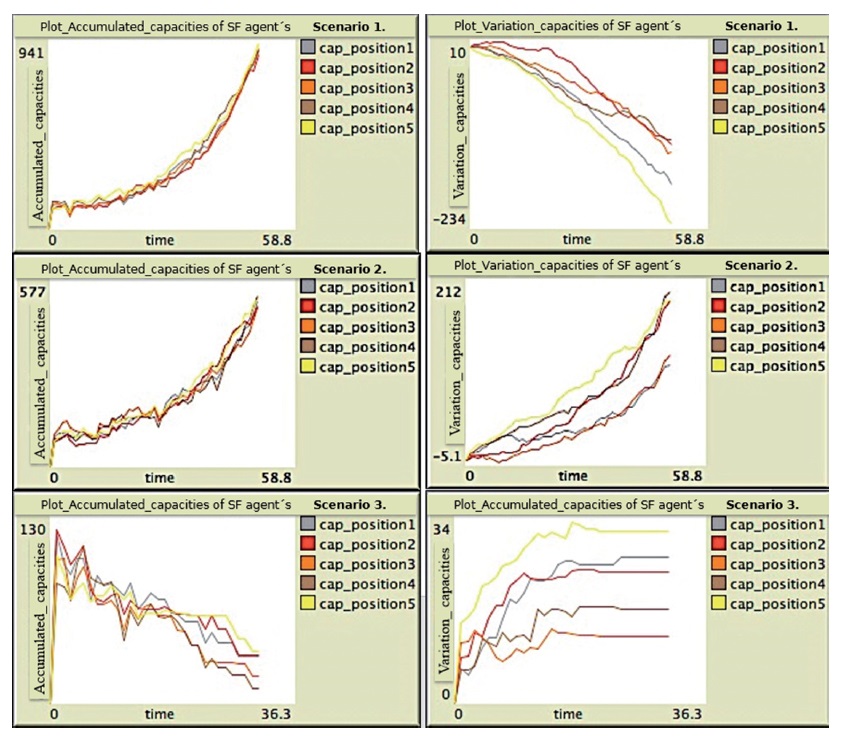
Figure 6 Acculation and variation of the capacities. Source: results of the simulations from the NetLogo interphase version 5.1.0.
One of the most relevant virtues of the model is the possibility of foreseeing and analyzing different scenarios as support for regional policy makers as it is well mentioned by Cooke (2001). A better understanding and comprehension of the different interactive learning dynamics proposed by Lundvall and Vinding (2004) and the learning patterns proposed by Howells (1999) are of great importance in order to determine the performance of any region as Fritsch and Slevtchev (2011) suggest. Therefore, it is important to carry out studies and analysis that would permit to know specialization patterns of the capacities of different regions.
The agents that participate actively in the construction of Success Formulas are more likely to learn and survive longer. This is due to the capacity to generate benefits that are reflected in their surplus stock and, therefore, in a greater economic performance of the system. The regions that have learned and accumulated capacities present a great variety of heterogeneous agents capable of responding rapidly to any demand no matter how strict their attributes might be. Moreover, they are very resilient regions and, hence, their adaptation and response in moments of crisis is more proactive due to past learning.
5.Conclusions
As a contribution to the consolidation of the simulation models for the theoretical development of the RIS study, the present work proposes a model oriented towards the analysis of learning of the RIS systems and of the specialization patterns that emerge from the cooperation of their agents. Despite addressing the RIS concept in an extensive theoretical manner in the last two decades, the simulation of these systems and their learning processes from a bottom-up perspective, it is a topic that is still being developed. The model proposed here seeks to make a contribution in the ABM perspective as a methodological strategy for the theoretical development of the RIS and its learning dynamics. Therefore, its end is not to make specific prognostics, but to confirm the potential these models have to improve the comprehension of the phenomena associated to regional learning, advancing in the formalization of the theoretical proposals on the topic, and exploring the scenarios analysis as a possibility of application of the models.
The strength of the proposed model lays on the possibility of integrating the known theories and relations of the RIS innovation processes from a bottom-up perspective under a single model based on agents. The model helps to understand the interactive learning dynamics of these systems as it contributes to the orientation of policies and regional innovation strategies aiming to improve the economic and innovative performance of the agents. The following contributions of the proposal are foreseen to be particularly relevant for the development of the model: 1) the representation of the agents as innovation capacities vectors in coherence with the resources perspective and capacities; 2) the theoretical formalization of the learning process through experience and interaction as accumulation of capacities resulting from the formation of success formulas that require taking the risk with many types of innovation capacities according to the attributes demanded by Innovation Opportunities of the market; 3) the inclusion of factors related to the relative proximity, the limited rationality, and the incentives originated in the public policies for the decision making of the agents when the IO emerges in the market; 4) the configuration of potential learning patterns for different specializations according to the confluence of market factors, of relations and public incentives.
It is considered of particular interest the fact that the model describes and makes operable the concepts of “integral and functional specialization” of the agents in the framework of the RIS. This can open a prosperous road for theoretical and empirical exploration of this systems’ performance starting from the interactive learning dynamics and from the perspective of the resources and capabilities. From an applied perspective, the model could be useful for the agents and for the public policy makers as an instrument of scenarios analysis. In this sense, the usefulness is analytical, not predictive. The RIS agents and the public policy makers could better understand the future developments of the regional system through the model due to a specific evolution of the factors that influence the agents on their decisions, on their behaviors, and the results of collective actions before the emerging IO in the market. Specific results in this direction are not presented here because it is not the objective of this article. However, the performed simulations make it possible to draw positive conclusions on the potential usefulness of the model for the scenarios analysis of the RIS in the learning perspective for innovation.
The model is expected to be applied as an experiment in regions of high, medium, and low economic and innovative performance so that differential patterns of learning that emerge as a result of the confluence of specific circumstances present within regions may be identified. Likewise, the model could be improved through the consideration of transaction costs and it could be used to analyze the impact of the intermediaries in the system performance. Finally, it is desirable to go deeper into the analysis of the system specialization patterns in relation to the distribution of characteristics of the agents’ population that would evolve through heritage, variation, and selection mechanisms.














